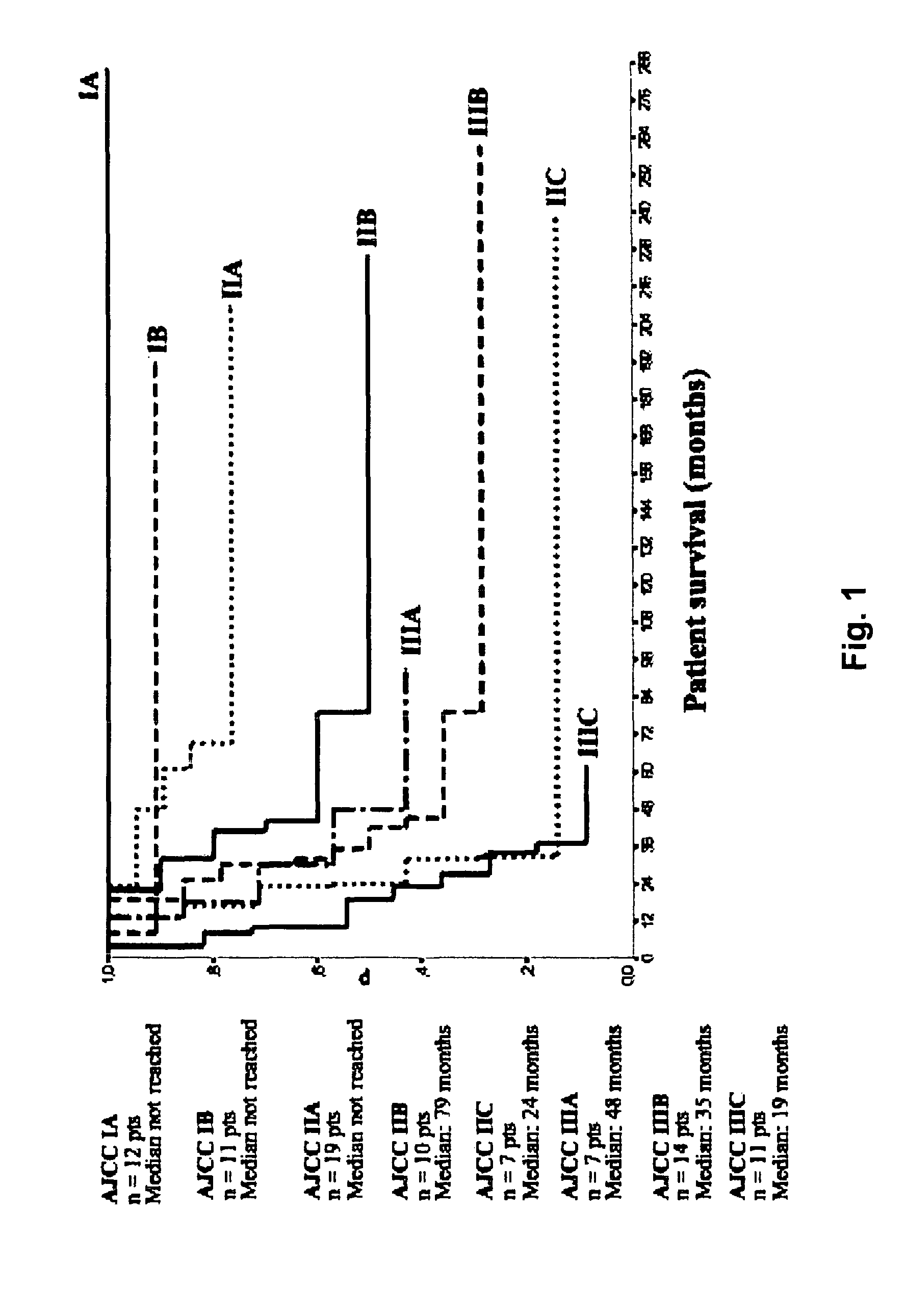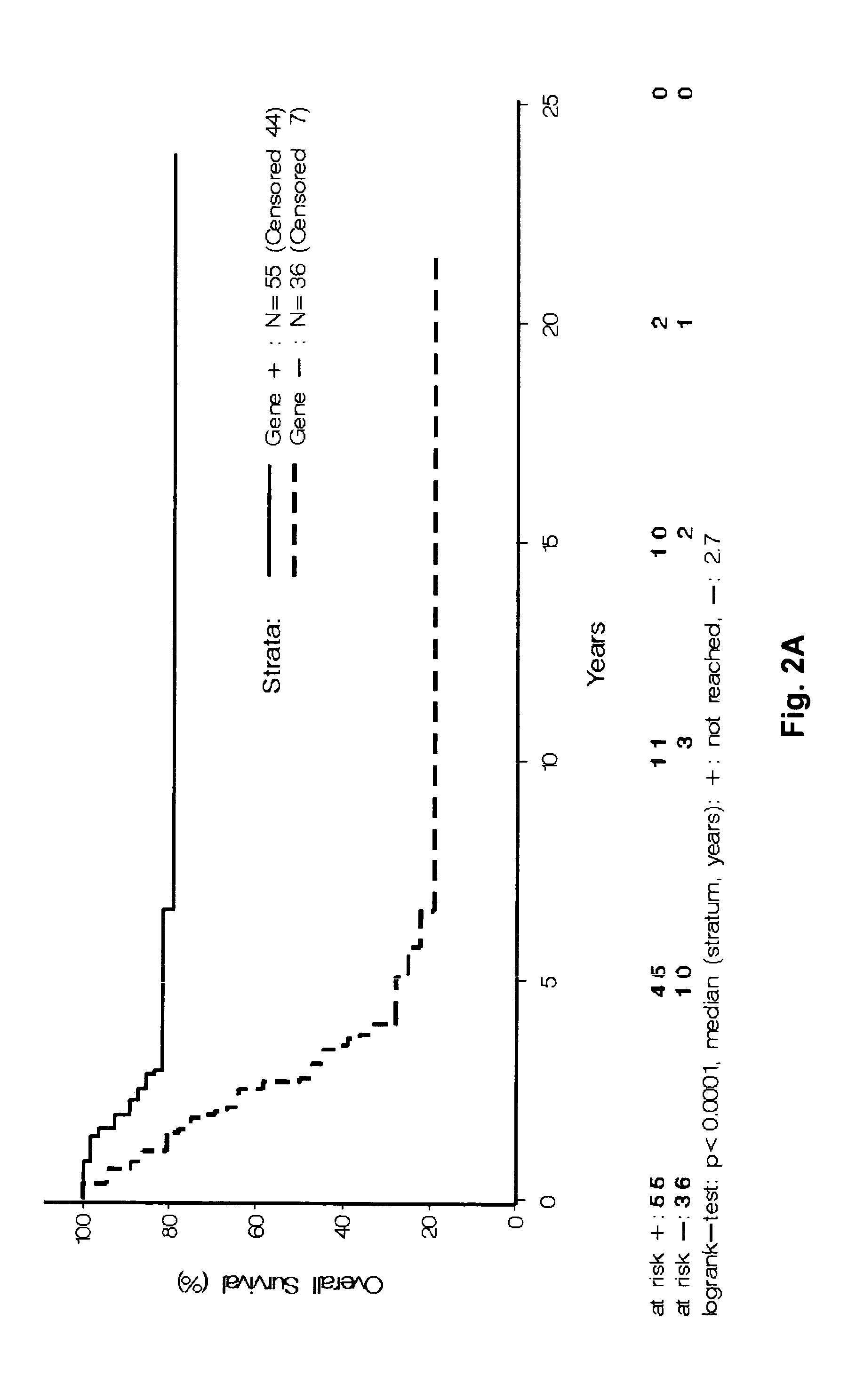Methods of predicting clinical outcome in malignant melanoma
a technology of clinical outcome and malignant melanoma, applied in the field of oncology, can solve the problems of insufficient target-specific therapies, largely unknown molecular mechanisms underlying melanoma progression, and currently used tnm
- Summary
- Abstract
- Description
- Claims
- Application Information
AI Technical Summary
Benefits of technology
Problems solved by technology
Method used
Image
Examples
examples
[0063]Patients and Tissue Specimens
[0064]Following informed consent of the patients, fresh frozen tissue samples from primary cutaneous melanomas in the vertical growth phase were recruited for this study between 1983 and 2006 at the Fachklinik Hornheide in Münster, Germany (n=132: training, study, and validation set) and at the Ludwig-Maximilians-University of Munich, Germany (n=4: validation set). All patients were treated uniformly following standard regimens. Representative tissue specimens of the tumor (Breslow thickness 0.22-42 mm; containing 10-100% tumor tissue, as determined by hematoxylin-eosin staining of cryosections and review by a histopathologist) had been frozen in liquid nitrogen at the time of diagnosis and stored at −80 ° C. until use. Histological review of the cases was done on paraffin-embedded tissue. Tissue collection was approved by the local medical ethical committee of the Westfälische-Wilhelms-University of Munster. Clinical and follow-up data were retrie...
PUM
| Property | Measurement | Unit |
|---|---|---|
| Fraction | aaaaa | aaaaa |
| Length | aaaaa | aaaaa |
| Length | aaaaa | aaaaa |
Abstract
Description
Claims
Application Information
 Login to View More
Login to View More - R&D
- Intellectual Property
- Life Sciences
- Materials
- Tech Scout
- Unparalleled Data Quality
- Higher Quality Content
- 60% Fewer Hallucinations
Browse by: Latest US Patents, China's latest patents, Technical Efficacy Thesaurus, Application Domain, Technology Topic, Popular Technical Reports.
© 2025 PatSnap. All rights reserved.Legal|Privacy policy|Modern Slavery Act Transparency Statement|Sitemap|About US| Contact US: help@patsnap.com



